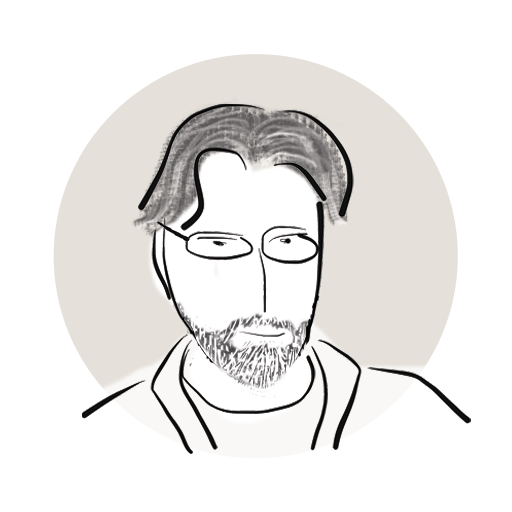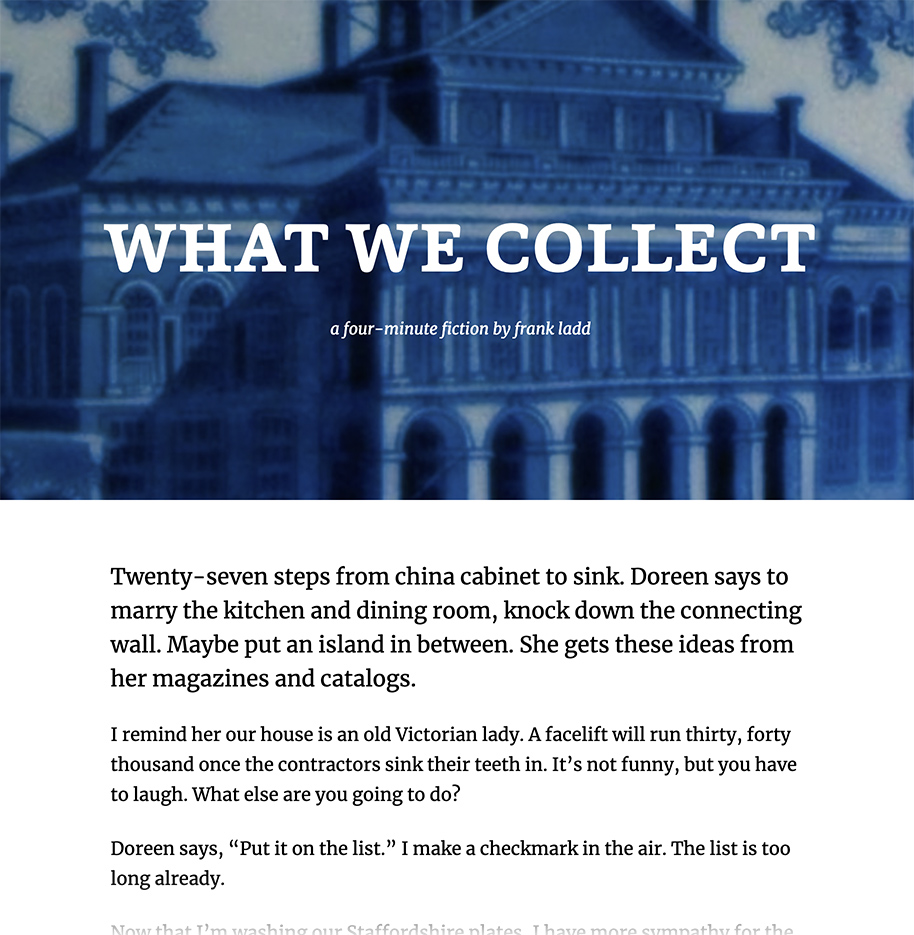What We Collect
short story
Not design, strictly, but since I refer to writing fiction several times within my project descriptions, I wanted to link to one of my online stories.
Spare and simple, but as you read you’ll get a sense for how I handle voice and thought, how I describe setting, how I communicate emotion, how I create character. These are all transferable skills.
I used to subscribe to Sirius/XM because they carried a channel that played old radio programs from the 1930s through 1950s. Lights Out. The Whistler. Yours Truly, Johnny Dollar. Radio drama at that time was an advanced art form (and now a lost art) and when I listened to those stories it was easy to forget that everything took place in my head. It seemed as if I was watching a lush movie. But there were only sounds and words.
A written story works the same. The greatest part of a story takes place in the reader’s mind. The words only suggest and point the way. Create a connection, build trust, set some characters in motion, then provide just enough detail to nudge a reader in the right direction. Let them do the rest. That’s always better than trying to micromanage emotion. It has to be real.
The same goes for design. Gain interest. Provide value. Nurture a relationship. Satisfy and delight. Nail the important details and trust the customer/user to complete the connection. That investment is what makes design powerful.
What I did
- Conceived and described a realistic world with believable characters. Set them in motion and projected a movie in the reader's mind. Coaxed empathy and trust from the reader. Tied the story threads together to give the ending a sense of closure, which leads to satisfaction and meaning. Filtered and reordered life, which creates art.

